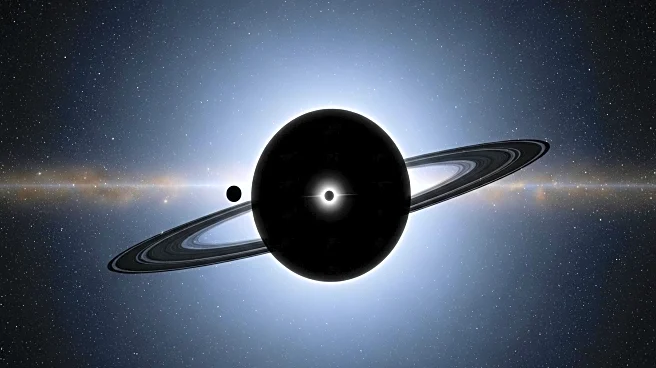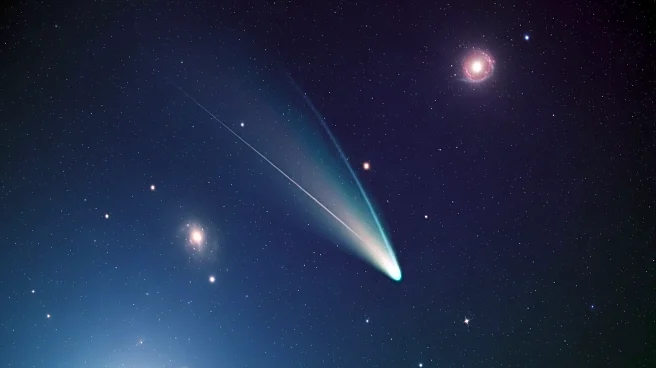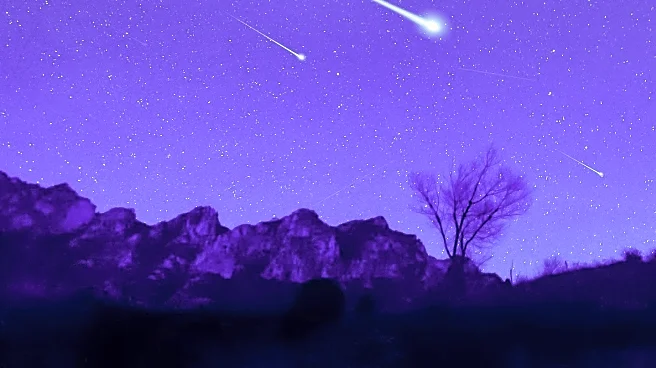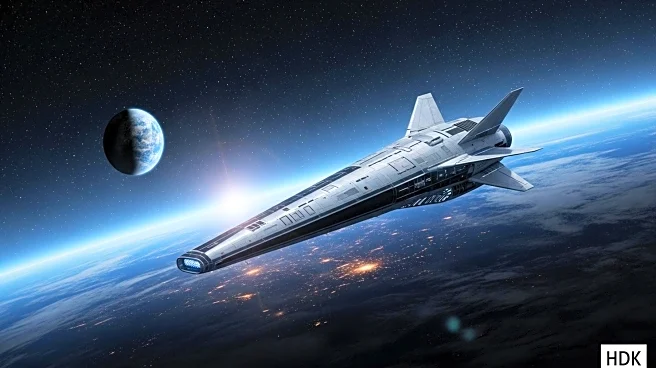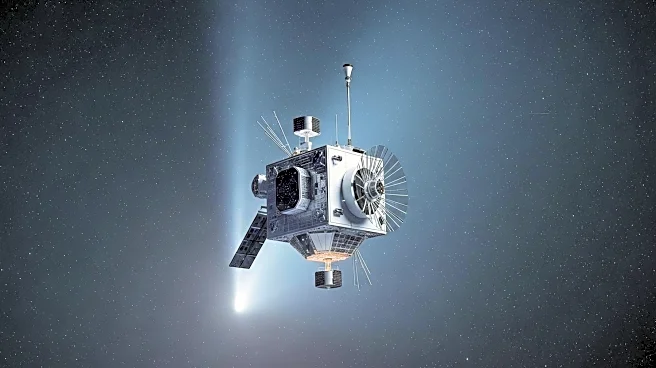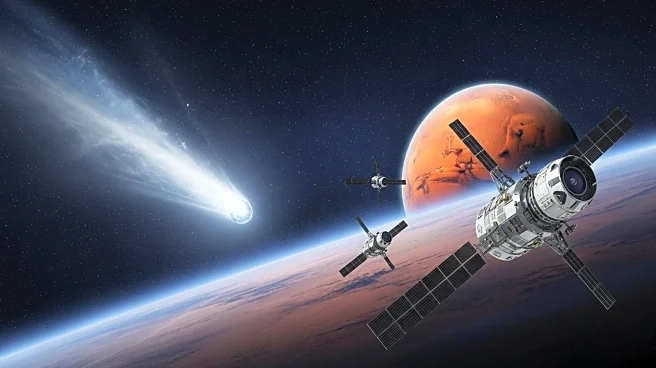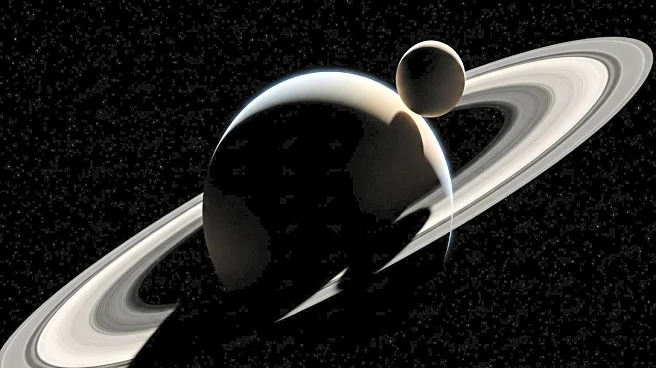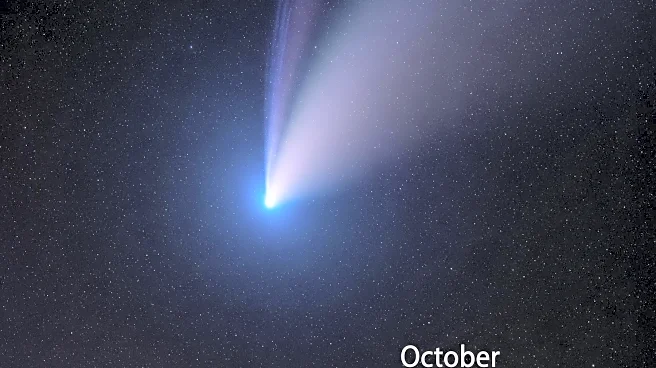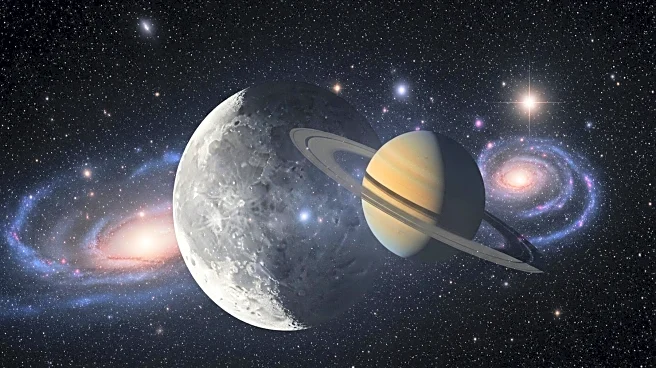What's Happening?
On October 5th and 6th, Titan, one of Saturn's moons, will make its final shadow transit across the planet for the next 15 years. This astronomical event involves Titan crossing Saturn's northeastern limb, with its shadow appearing on the planet's disk shortly after midnight EDT. The transit begins around 9:25 p.m. EDT and lasts until approximately 2:45 a.m. EDT. Observers will need telescopes to view the transit, as Titan crosses from east to west, reaching halfway across Saturn's disk around midnight. The shadow appears north of Titan, traversing Saturn's northern polar region, and completes its journey by 2:17 a.m. EDT.
Why It's Important?
This event is significant for astronomers and sky watchers, as Titan's shadow transit across Saturn is a rare occurrence, with the next one not expected until 2040. Such transits provide valuable opportunities for scientific observation and study of Saturn's moons and their interactions with the planet. The event also highlights the intricate dynamics of celestial bodies within our solar system, offering insights into planetary motion and gravitational influences. For enthusiasts and professionals alike, this transit is a chance to witness a unique astronomical phenomenon that underscores the complexity and beauty of the universe.
What's Next?
Following this transit, astronomers and sky watchers will have to wait until 2040 for the next opportunity to observe Titan's shadow crossing Saturn. In the meantime, the event may inspire further research and exploration into Saturn's moons and their orbital patterns. Observatories and amateur astronomers may continue to monitor Saturn and its moons for other interesting phenomena, contributing to ongoing studies of the planet's atmospheric conditions and satellite dynamics. The event may also encourage public interest in astronomy, leading to increased participation in sky watching activities and educational programs.
Beyond the Headlines
The transit of Titan's shadow across Saturn not only serves as a spectacle for sky watchers but also poses questions about the long-term study of planetary systems. It highlights the importance of continued observation and research in understanding the mechanics of celestial bodies. The event may also prompt discussions on the technological advancements needed to enhance astronomical observations, such as improved telescopic equipment and data analysis techniques. Additionally, it underscores the cultural and educational value of astronomy in fostering curiosity and appreciation for the natural world.

